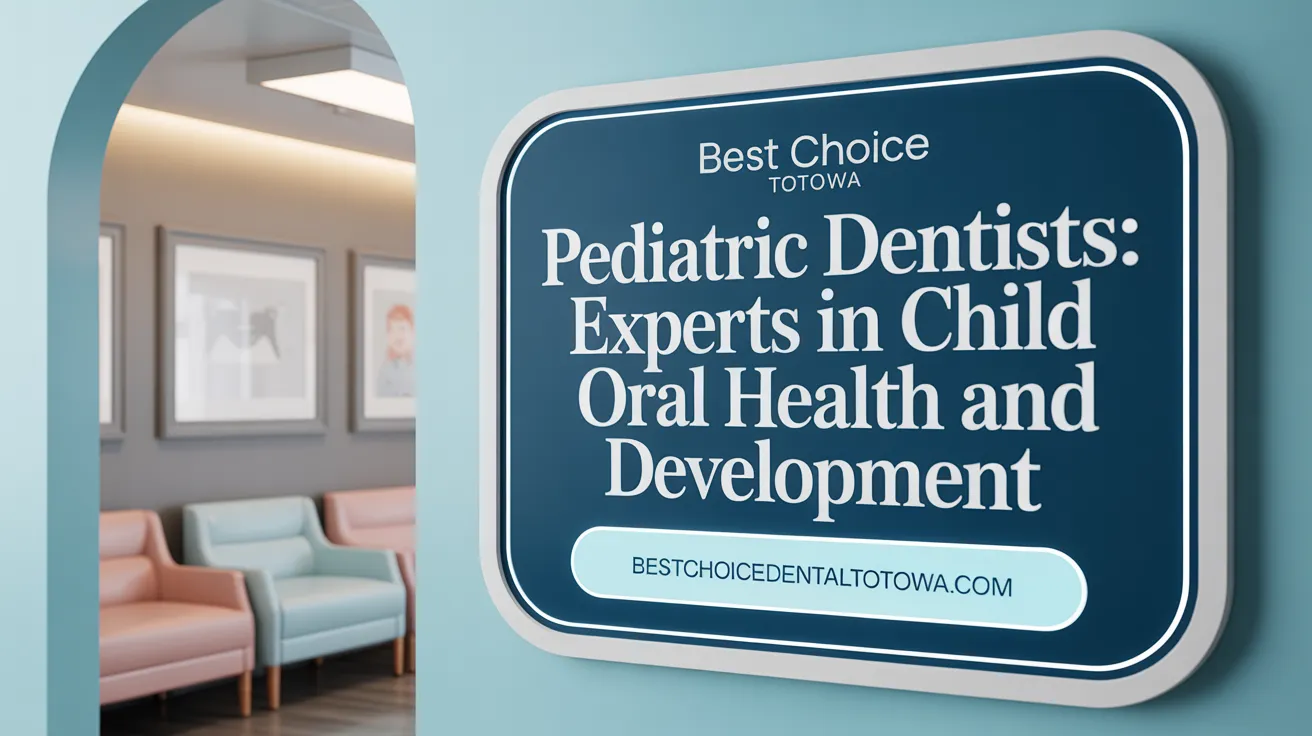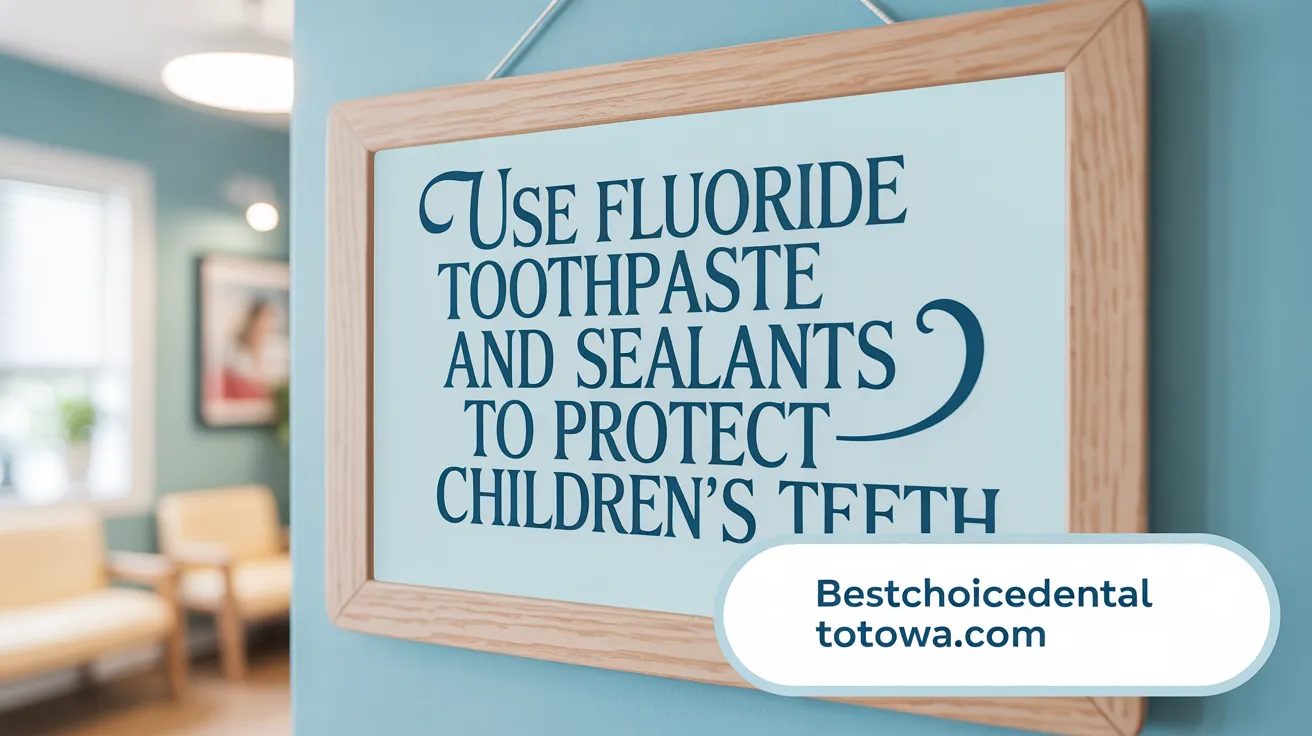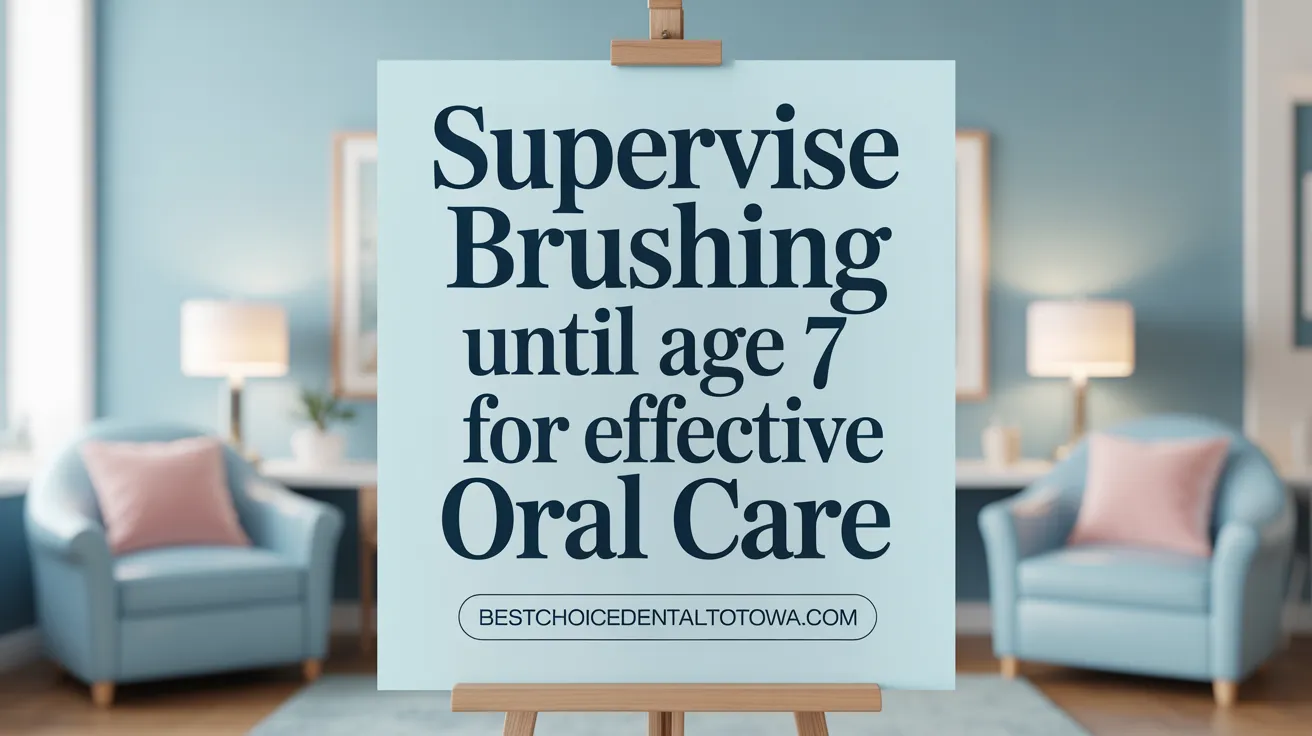Introduction to Pediatric Dental Health
The oral health of children is critical to their overall well-being, affecting their ability to eat, speak, and learn comfortably. With cavities being the most common chronic disease among children, early and sustained dental care is essential. This guide presents a comprehensive overview from understanding pediatric dentistry to effective preventive practices that parents and caregivers should embrace to safeguard children's teeth from infancy through adolescence.
The Role and Importance of Pediatric Dentistry

What is pediatric dentistry and why is it important?
Pediatric dentistry is a specialized branch of dental care focusing on the oral health of infants, children, adolescents, and individuals with special needs. These dentists undergo an additional two to three years of advanced training after dental school, equipping them with expertise in child psychology, behavior management, and the growth and development of children's teeth and jaws. For more details on Pediatric Dentist Overview and the Role of Pediatric Dentists.
What specialized training do pediatric dentists receive?
Pediatric dentists receive rigorous education to address the unique dental and behavioral needs of children. Their training includes techniques to make young patients comfortable and minimize anxiety during visits. This specialized preparation allows them to provide effective care tailored to children's physical and emotional development stages. For comprehensive insights, refer to American Academy of Pediatric Dentistry (AAPD) policies and Training of Pediatric Dentists.
Why are early dental visits important?
The American Academy of Pediatric Dentistry recommends a child's first dental visit by their first birthday or within six months after the first tooth appears. Early visits help establish a dental home for the child, facilitate early detection of potential dental issues, and encourage the formation of healthy oral habits. They also help children become familiar with dental care, reducing fear and promoting lifelong oral health. Learn more about First dental visit by age one and Early dental visits benefits.
What unique challenges do pediatric dentists address?
Treating children involves overcoming challenges such as managing fear and anxiety, addressing behavioral issues, and adapting care to developmental stages. Pediatric dentists use child-friendly techniques, special equipment, and communication strategies to ensure a positive experience while delivering comprehensive care. Explore topics on Behavior guidance strategies and Management of traumatic dental injuries.
What services do pediatric dentists provide?
Pediatric dentists offer a wide range of services, including:
- Preventive care: cleanings, fluoride treatments, sealants
- Restorative treatments: fillings, crowns
- Habit counseling: addressing thumb sucking, pacifier use
- Early orthodontic evaluations and treatments
- Emergency dental care for injuries
They monitor tooth and jaw development while educating families about proper oral hygiene and nutrition to support long-term dental health. For more on Preventive dental care for children and Pediatric dental services and treatment.
Through specialized expertise and comprehensive care, pediatric dentistry plays a crucial role in establishing and maintaining children's oral health, ultimately contributing to their overall well-being and development. For additional Oral health tips for children and Promoting Dental Health from Birth.
Preventing Cavities: Strategies and Best Practices

What causes cavities in children and how common are they?
Cavities, also known as dental caries, are the most common chronic disease in childhood. They happen when acid-producing bacteria in the mouth consume sugars and starches from foods, creating acids that erode the protective enamel on teeth. This breakdown leads to decay, which is especially common in children: over half of kids aged 6 to 8 have experienced cavities in their baby teeth, and adolescents show similar prevalence in permanent teeth. Untreated cavities can cause pain, infections, and affect everyday activities like eating, speaking, playing, and learning. Learn more about Tooth decay in children and Children's cavity statistics.
How can cavities be prevented effectively in children?
Effective cavity prevention revolves around good oral care and healthy lifestyle habits. Starting from the appearance of the first tooth, brushing twice daily with fluoride toothpaste is essential. Fluoride strengthens enamel, making it more resistant to acid attacks. Parents should actively supervise brushing until children master proper techniques, usually around age 7 or 8.
Professional fluoride varnish applications can reduce primary tooth cavities by about one-third. Additionally, dental sealants — thin protective coatings applied to the chewing surfaces of back molars — can cut cavity risk in those teeth by up to 80%. These preventive treatments create physical and chemical barriers against decay-causing bacteria.
Living in communities with fluoridated tap water further reduces cavity occurrence, providing ongoing enamel protection. Diet also plays a crucial role: limiting sugary drinks and snacks decreases acid production by bacteria. Encouraging water consumption, along with fruits, vegetables, and calcium-rich dairy foods, supports strong, healthy teeth.
Oral hygiene routines and parental involvement
Consistent home care routines are vital. For babies, parents should wipe gums gently twice daily and start brushing with a soft-bristled toothbrush and plain water once teeth appear. As children grow, brushing with fluoride toothpaste twice daily is essential, with parental guidance to ensure thorough cleaning. Flossing should begin as soon as teeth start touching.
Positive reinforcement and making brushing fun can motivate children to maintain these habits. Regular dental visits starting by the first birthday allow early detection and monitoring, ensuring preventive strategies are properly implemented.
Dietary recommendations to reduce cavity risk
Reducing the frequency and quantity of sugary foods and drinks is a cornerstone of cavity prevention. Avoiding bedtime bottles with milk or juice helps prevent prolonged sugar exposure. Instead, offering water between meals and limiting juice to small amounts at mealtimes minimizes acid attacks on teeth.
Encouraging a balanced diet rich in vegetables, fruits, dairy products, and lean proteins supports oral and overall health. Healthy eating combined with fluoride use and regular dental care forms a comprehensive approach to keeping children's teeth cavity-free and strong.
Establishing and Maintaining Healthy Oral Hygiene Habits

How should parents care for their child's teeth from infancy onward?
Oral hygiene should begin even before a baby’s first tooth appears. Parents are advised to gently wipe their infant’s gums twice daily with a soft, clean cloth to prevent bacteria buildup and prepare the mouth for healthy teeth (Cleaning infant gums).
When the first teeth erupt, typically around 6 months of age, parents should switch to using a small, soft-bristled toothbrush. Initially, brushing is done with plain water, gradually introducing fluoride toothpaste to protect against decay (Fluoride toothpaste guidelines for children). For children under 3 years, a smear of fluoride toothpaste about the size of a grain of rice is appropriate. This increases to a pea-sized amount for children aged 3 to 6 (Fluoride Toothpaste Usage for Kids.
Brushing should be performed twice daily for approximately two minutes (Brushing teeth for two minutes). Parents should assist or supervise their children until they develop effective brushing skills, usually by age 7 or 8 (Parent help with brushing). Beginning flossing once the teeth start to touch, commonly around age 3, is vital to remove plaque between teeth (Supervised flossing for kids. Parental help with flossing should continue until the child can manage independently (Brushing and flossing kids' teeth.
Incorporating fun elements like games, songs, and reward charts helps motivate children and creates a positive association with oral hygiene. This approach supports the establishment of consistent and enjoyable dental care routines, promoting lifelong healthy habits (Maintaining Children's Oral Health).
The Significance of Early and Regular Dental Visits
When should children visit the dentist and what happens during visits?
Children should have their first dental visit by age one or within six months after the first tooth appears. This early visit helps establish a "dental home" making future visits comfortable and less intimidating for the child. Dentists perform examinations to detect early signs of cavities or developmental issues and educate parents on appropriate oral hygiene and diet.
Role of dentists in prevention and treatment
Dentists play a crucial role in preventing tooth decay through professional cleanings, fluoride treatments, and applying dental sealants to protect vulnerable back teeth. They also identify and treat any dental problems early, minimizing pain and more serious complications.
Frequency of dental checkups
Routine dental checkups are usually scheduled every 3 to 12 months based on the child's risk factors and oral health needs. Regular visits ensure ongoing monitoring of teeth and jaws as children grow, allowing timely interventions.
Common procedures during dental visits
During visits, dentists may perform a thorough dental exam, professional cleaning to remove plaque, fluoride varnish application to strengthen enamel, and sealant placement on molars to prevent cavities. X-rays might be taken when necessary to detect hidden decay or developmental concerns.
Addressing dental emergencies
In cases of dental emergencies such as toothache, trauma, or broken teeth, prompt dental care is essential. Early treatment helps relieve pain, prevents infections, and maintains healthy teeth and gums to avoid future complications.
Supporting Factors for Pediatric Oral Health Beyond the Clinic

What outside-the-dental-office factors influence children's oral health?
Children's oral health is shaped not only by dental visits but also significantly by environmental, nutritional, behavioral, and social factors.
Community Water Fluoridation and Public Health:
Water fluoridation is a cornerstone public health strategy that strengthens tooth enamel against decay. This natural mineral added to drinking water reduces acid production by bacteria in the mouth, effectively lowering cavity rates among children living in fluoridated areas compared to those without access.
Nutrition and Dietary Influences:
A balanced diet is crucial for strong teeth. Eating plenty of fruits, vegetables, dairy products, and lean proteins provides essential nutrients like calcium and vitamins supporting dental development. Conversely, frequent consumption of sugary snacks, sodas, and sweetened juices contributes to tooth decay by feeding cavity-causing bacteria (Healthy Eating for Dental Health).
Behavioral Factors: Thumb Sucking and Pacifier Use:
Prolonged thumb sucking or pacifier use beyond toddlerhood (ages 2 to 4) can impact teeth alignment, potentially leading to malocclusion. Encouraging children to stop these habits within this period helps prevent dental issues and supports healthy oral development (Thumb sucking and dental problems).
Role of Pediatricians and Caregivers:
Pediatricians play a vital preventive role by performing oral health risk assessments during routine check-ups, applying fluoride varnish to young children's teeth, and educating families on proper home care. Caregivers assist with daily brushing routines and foster healthy habits around diet and dental visits (Parent help with brushing.
Addressing Disparities and Promoting Equitable Care:
Socioeconomic and racial factors influence children's access to dental care and prevention services. Tackling these disparities requires culturally sensitive education, expanded access to affordable dental professionals, and community programs focusing on oral health equity.
Together, these outside-the-clinic factors create a supportive environment that enhances children's oral health and complements professional dental care.
Conclusion: Building a Foundation for Healthy Smiles
Children's dental health is a foundational component of their overall wellness and quality of life. Through the expertise of pediatric dentists, early preventive care, and consistent oral hygiene practices guided by informed parents and caregivers, the prevalence of dental caries and other oral health issues can be greatly reduced. Establishing regular dental visits, embracing community fluoride benefits, promoting healthy dietary habits, and supporting children in developing positive behaviors create the pathway for a lifetime of healthy, confident smiles.
